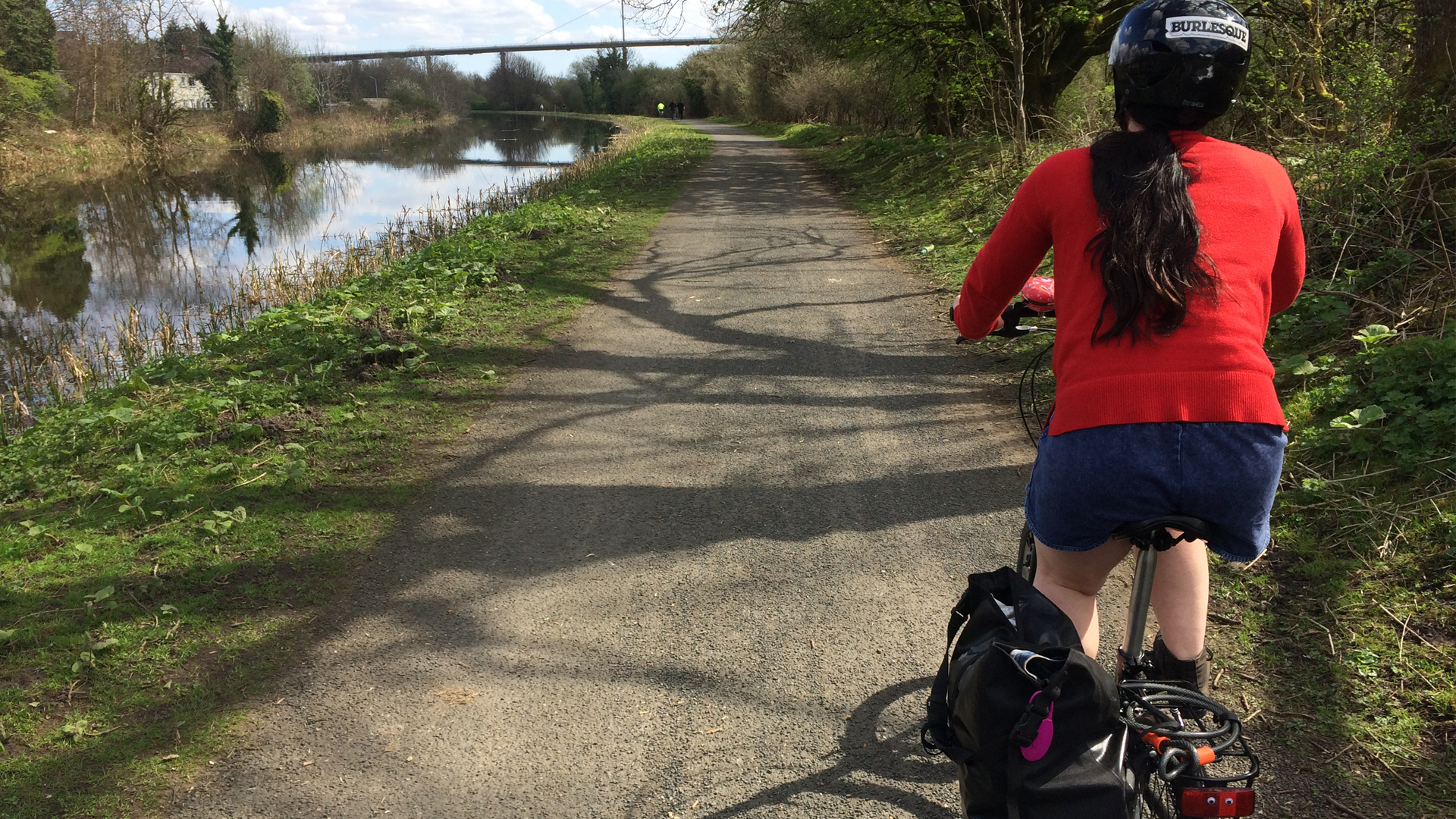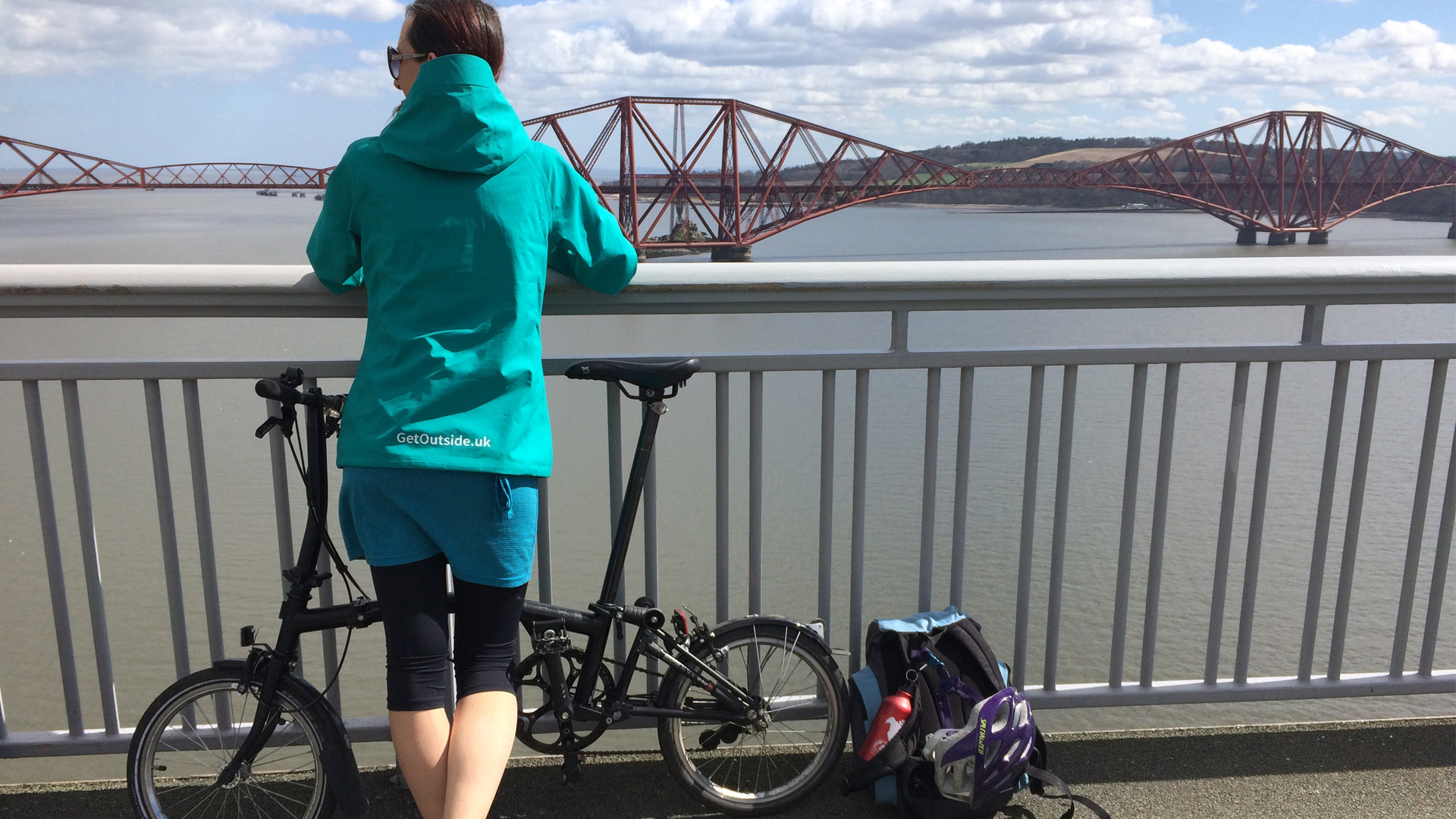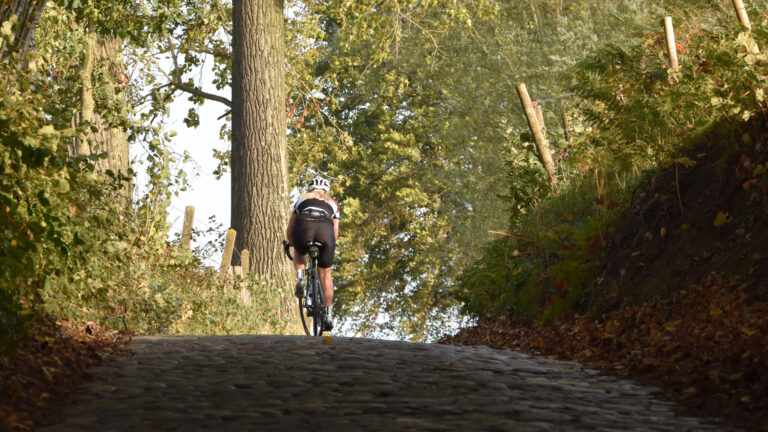Words by Anna Hughes
A long day’s ride or a weekend away between two great Scottish cities, with easy cycling and spectacular views.
Canal towpaths are a favourite of mine for cycling adventures: flat, easy to navigate, tranquil and steeped in history. The Forth and Clyde canal cuts a trough between east and west Scotland, linking the fabulous cities of Glasgow and Edinburgh by way of the Union arm.
6 Relaxing Waterway Cycle Rides in the UK
Offering 65 miles of traffic-free riding through industry and countryside, with feats of engineering such as the Falkirk Wheel to marvel at along the way, it’s perfect for families and a gentle weekend getaway, or a more sustained challenge if you chose to ride it in a single day.
The route can be ridden in either direction, but west to east means you’ll be less likely to be battling a headwind the whole way!
The Route
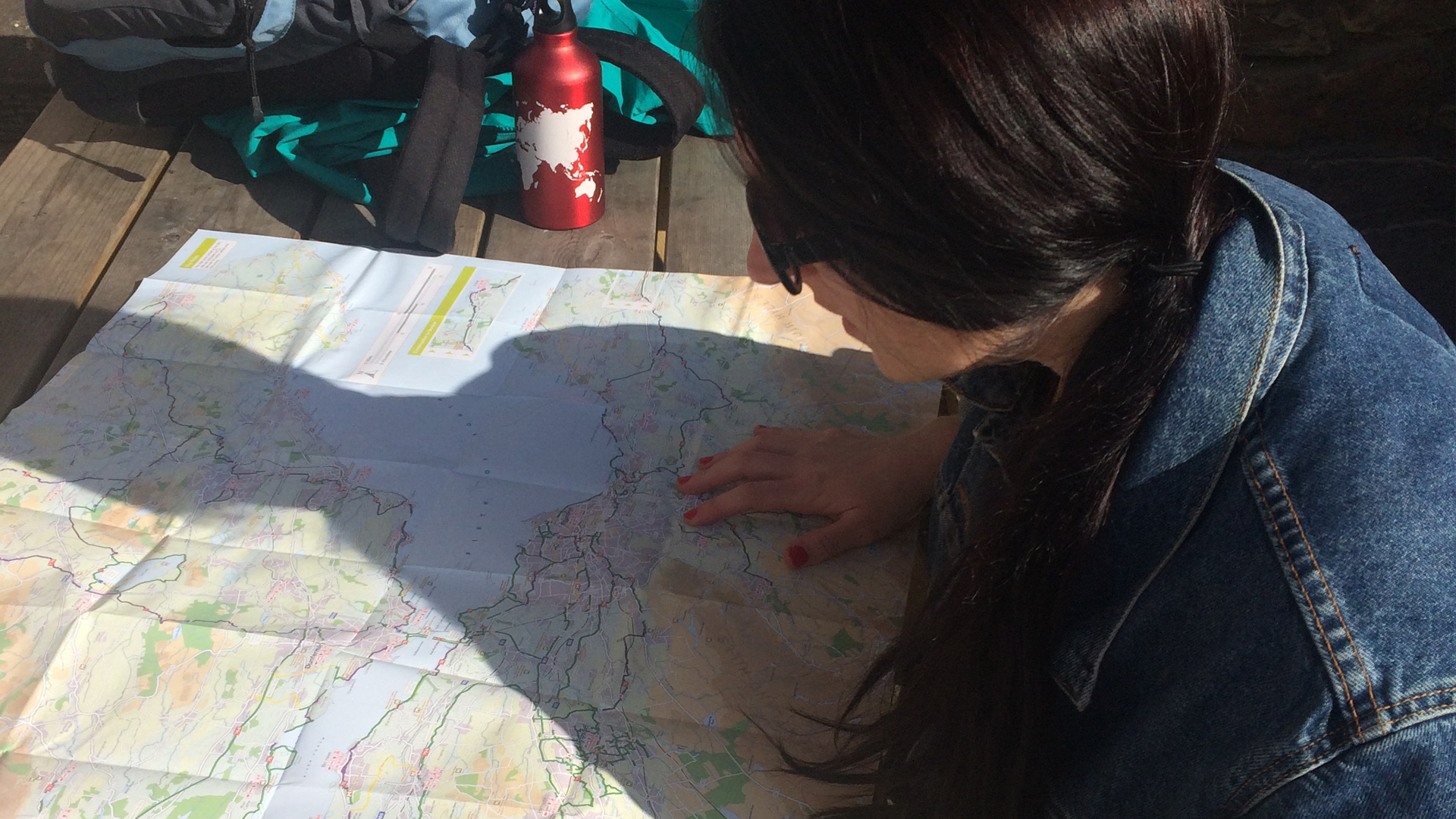
From Glasgow centre, the National Cycle Network route 7 heads westwards along the Clyde riverfront before picking up an old coal railway that would once have transported goods into the city from the docks at Clydebank.
Here, a giant bicycle sculpture marks the junction with the Forth and Clyde canal. The true start of the canal is 4.5 miles to the west, at Bowling, and it’s worth the ride out and back to see the pretty basin and get a sense of the vast Clyde; though miles inland, the river carries the tang of the sea.
There is a cafe, toilets and handy bike shop at Bowling, then it’s back the way you came, passing beneath the gravity-defying Erskine bridge on the return to Clydebank. The towpath then follows a steady upward trajectory for nine miles as locks gradually raise the level of the canal to the top pound at Maryhill, still within the northern clutches of the city, then a sixteen mile section of seeming wilderness follows, the canal pacing the River Kelvin with stark snow-capped mountains on the north side of the valley and suburbia to the south.
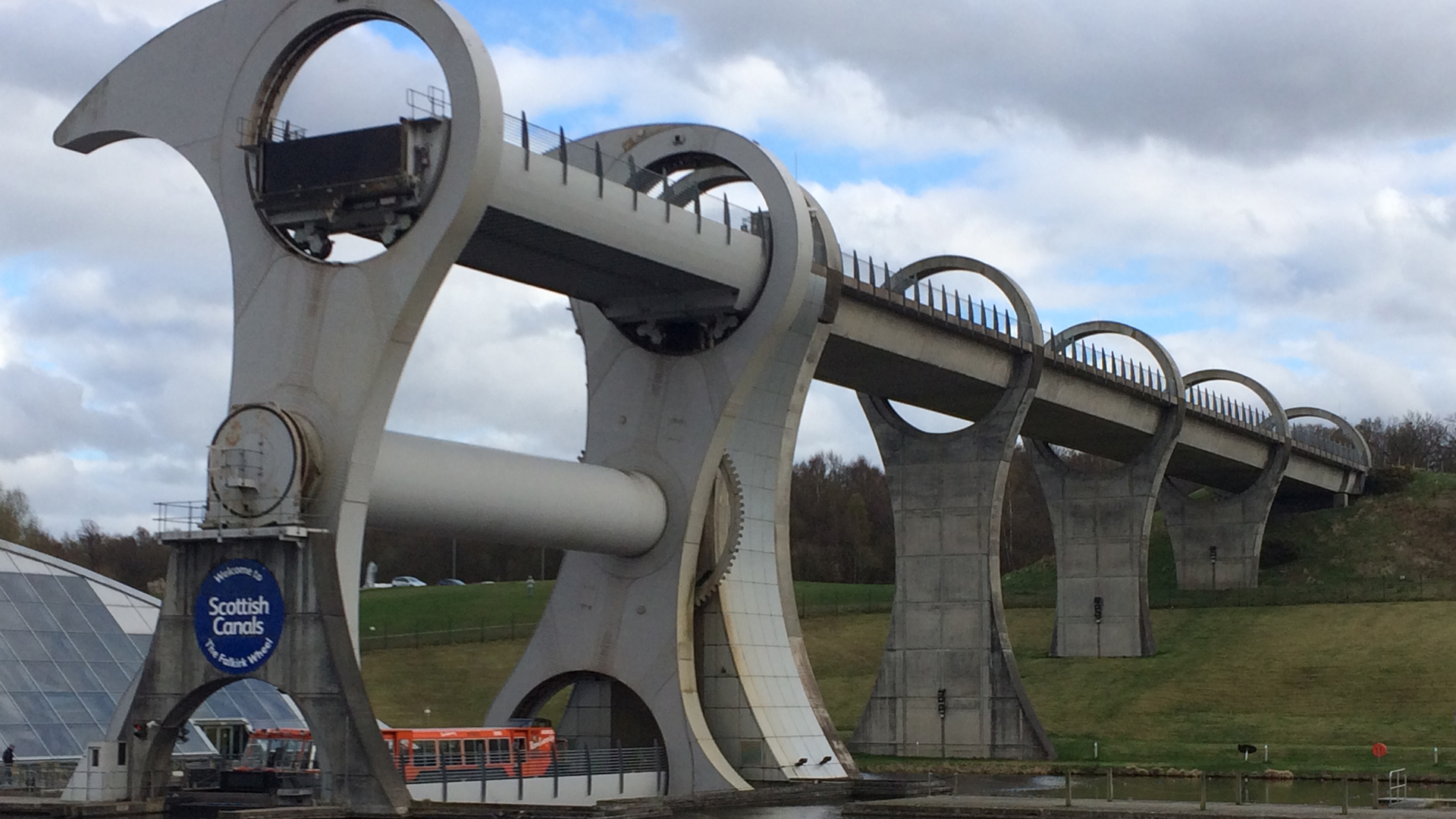
Reaching the Falkirk Wheel is always going to take the breath away. A true feat of engineering, the rotating boat lift elevates craft from the lower basin on the Forth and Clyde to the upper level of the Union canal. Opened in the early 2000s, it replaced the 11 traditional locks that once connected the two waterways before they fell into disrepair when competition from rail and road in the early part of the twentieth century caused the canal to close.
From here, there are a couple of options; continue along the Forth and Clyde canal for another five miles then follow the round-the-Forth route to Edinburgh, or change tack and head directly for Edinburgh along the Union canal.
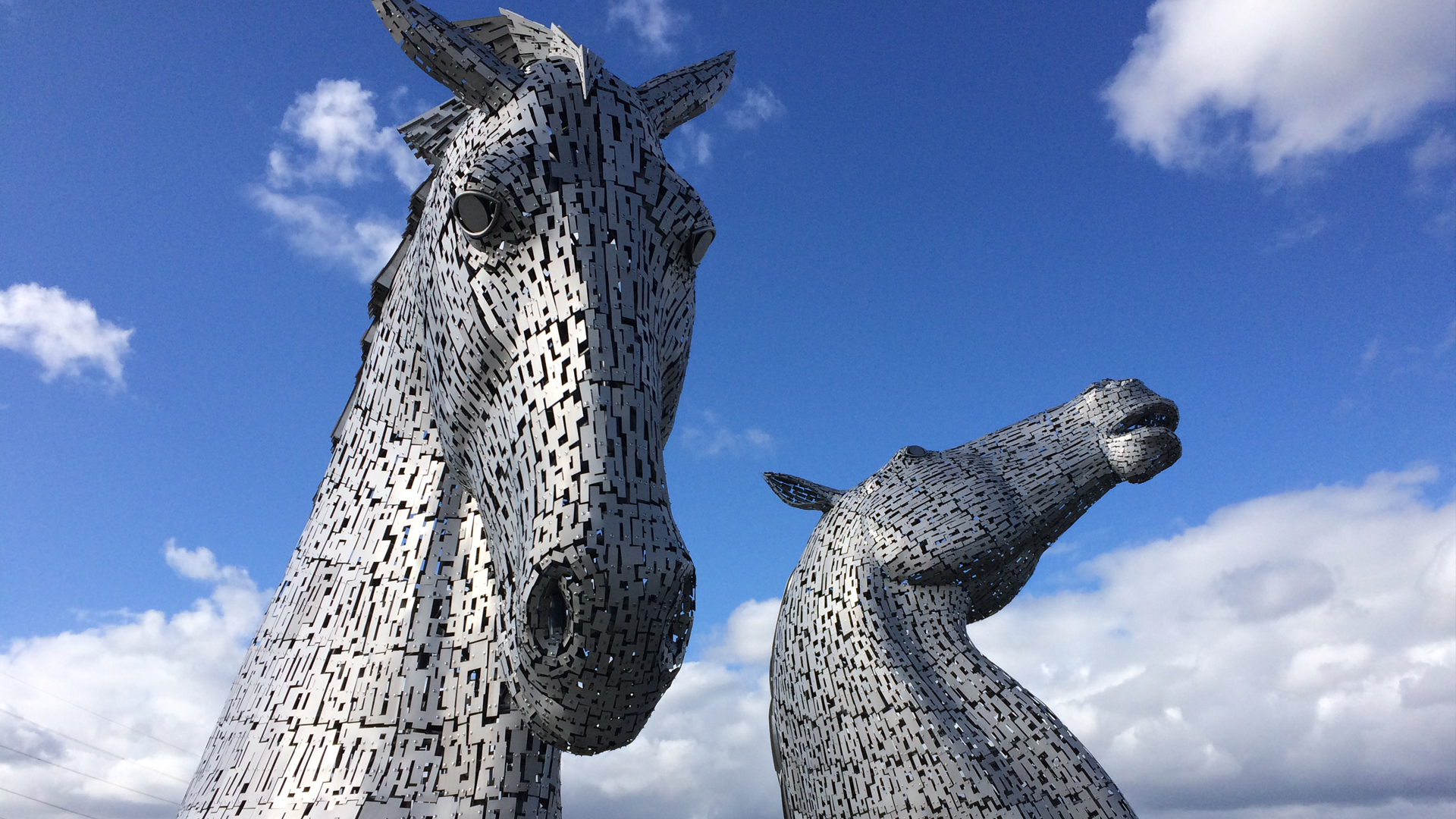
The Union towpath is narrower than on the Forth and Clyde, and is uneven in places, though there are plenty of pretty stretches and some good refreshment spots. Round-the-Forth offers more adventurous riding, with some off-road trails as well as on-road stretches, some variety in the form of hills, and stunning views across the firth. It includes such attractions as The Kelpies, two giant sculpted horse heads that guard the basin at the entrance to the Forth, and leads eventually to the impressive trio of bridges at Queensferry, where the new road crossing joins the Forth Road suspension bridge and the world-famous Forth Rail Bridge to span the waters of the firth.
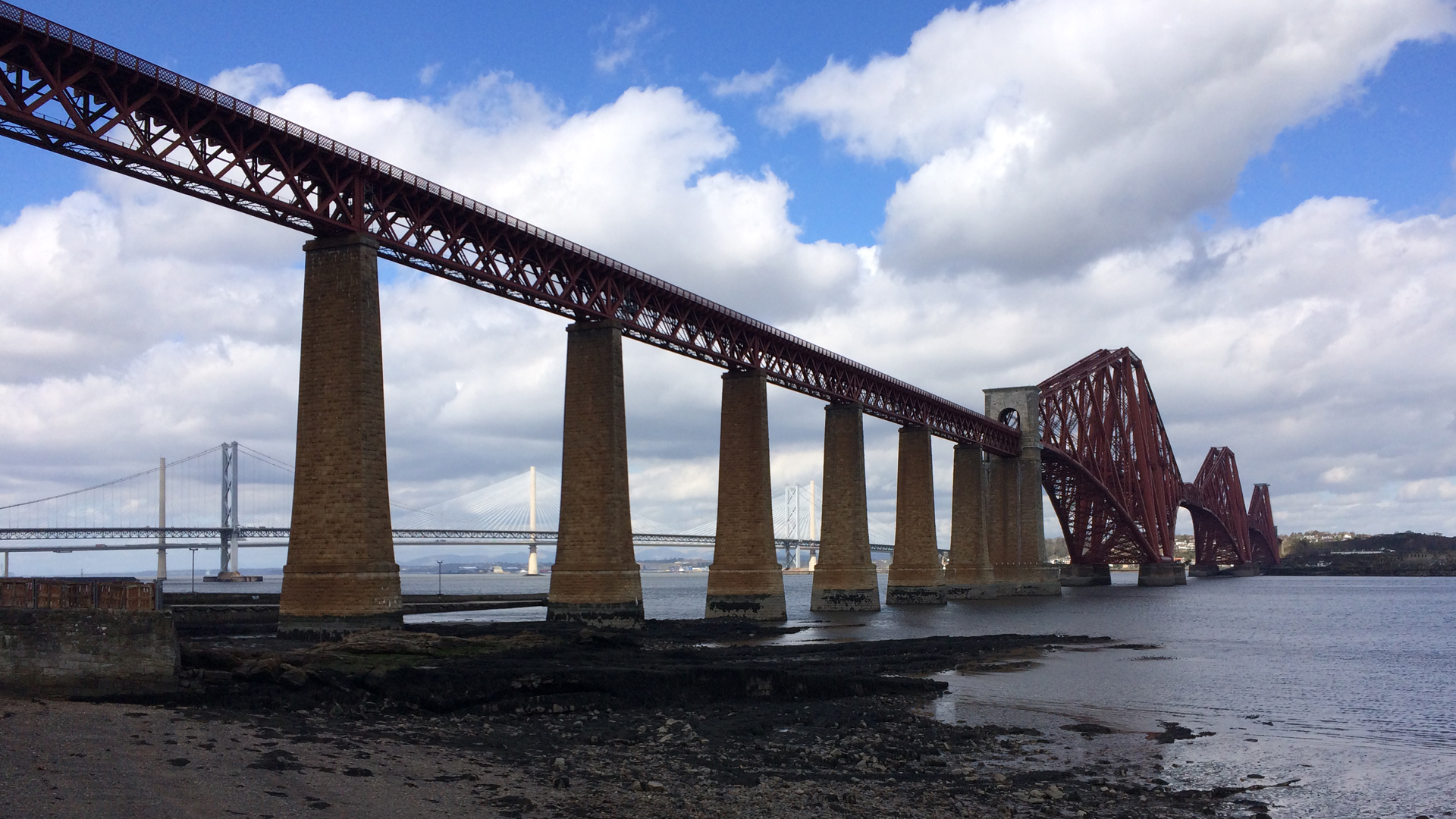
The road bridge is now closed to all traffic apart from buses and has a dedicated cycle lane on either side. The views are spectacular, so ride out and back, though mind the wind. National Cycle Network route 1 then heads straight into Edinburgh, though the longer route through the Dalmeny estate offers some picturesque views and great riding on its rough and, in parts hilly, track. A disused railway line then leads into the heart of Edinburgh.

